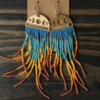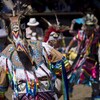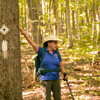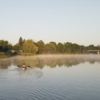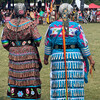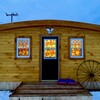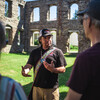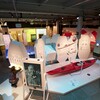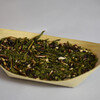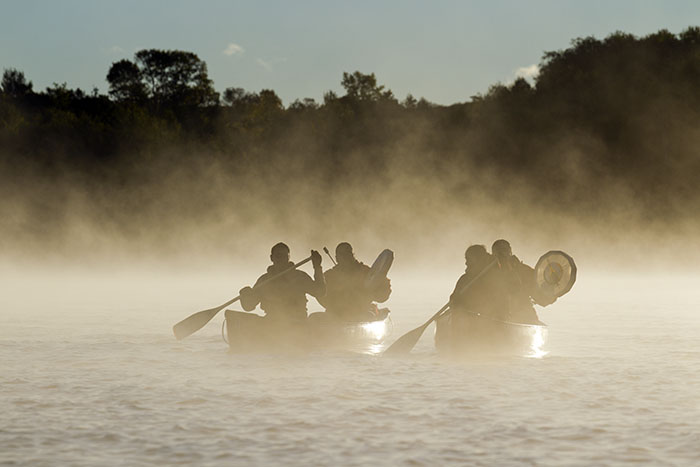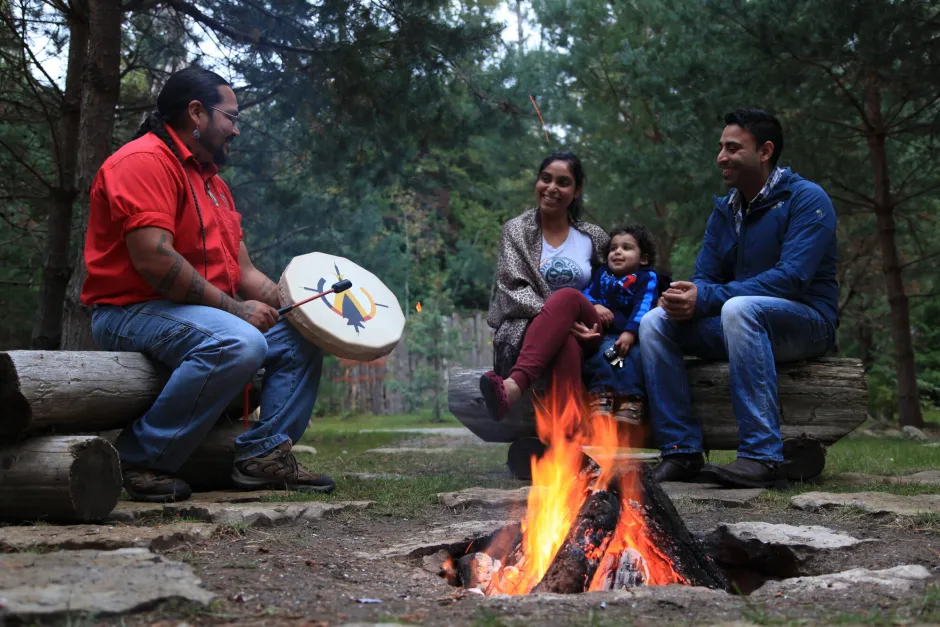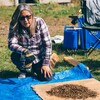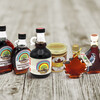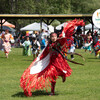
Please note this page may no longer be up to date. For new stories about Northern Ontario visit us here.
Urban eats, small-town warmth
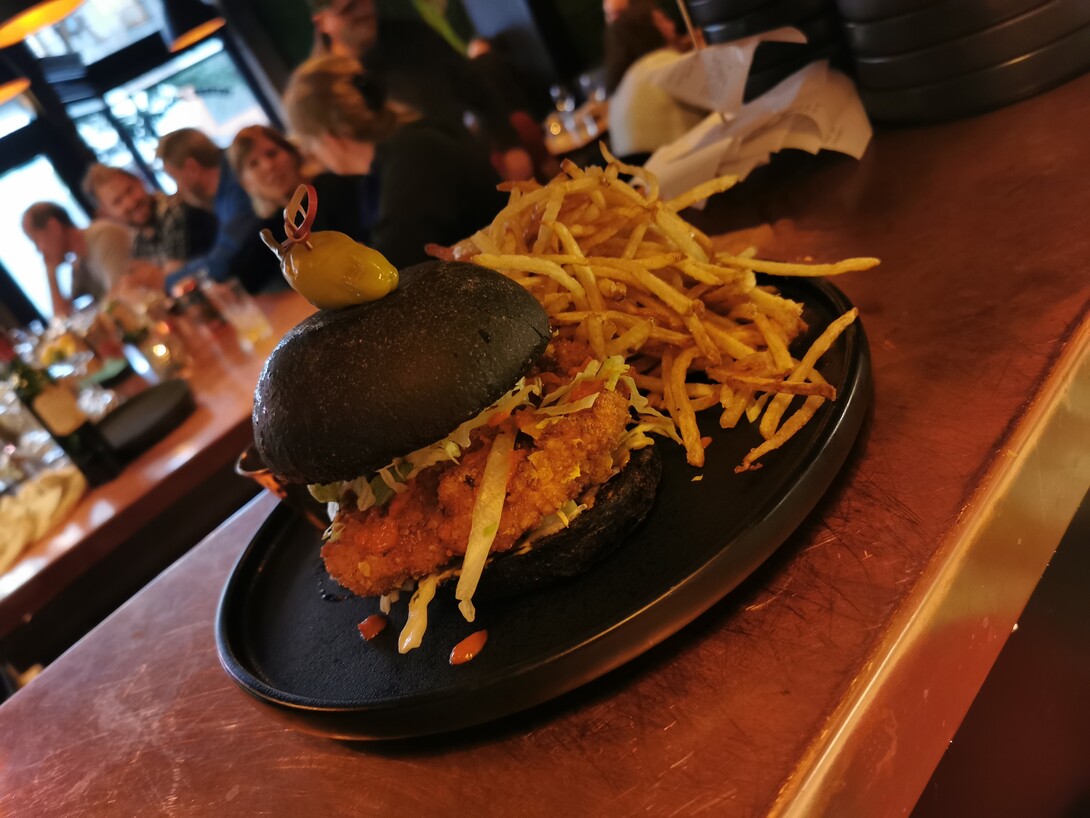
Editor's Note: L’Autochtone closed its doors in spring of 2023.
When you walk into L’Autochtone, it feels like you’re on Toronto’s Queen Street, or maybe downtown Vancouver. With its contemporary decor, striking Indigenous pop art, and a well-executed menu, it would give any big-city restaurant a run for its money.
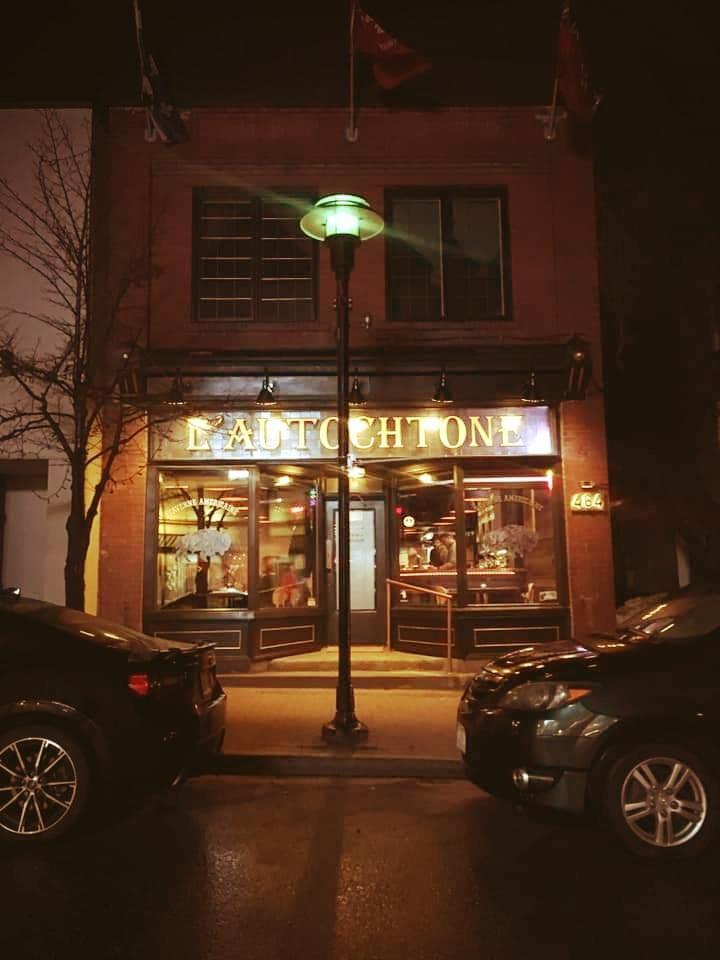
At the same time, the tiny restaurant in Haileybury, part of Temiskaming Shores, also pays homage to its small-town, Northern Ontario heritage in almost everything it does. There are tables with tops made out of local birch bark, a moss wall with real moss, and a menu largely sourced from local suppliers.
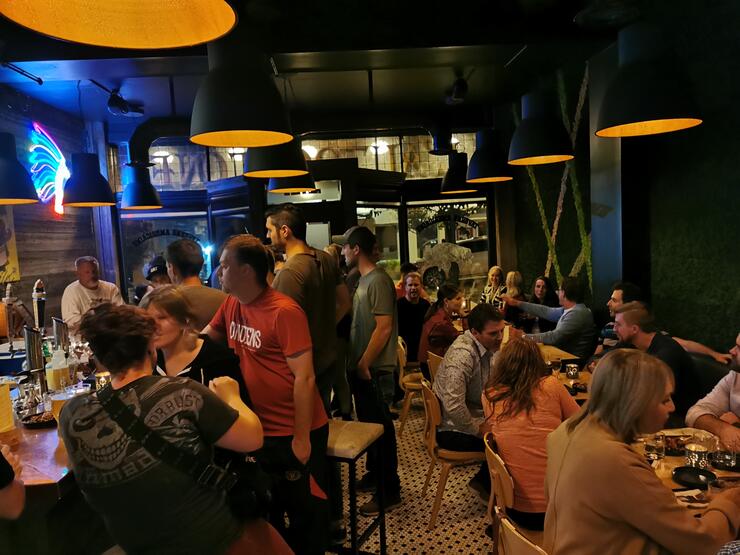
Even its name, the French word for Indigenous, references the important influences of Franco-Ontarian and Indigenous culture in Northeastern Ontario.
L’Autochtone’s blend of modern, urban atmosphere with small-town character and warmth is no accident; it’s the same combination reflected in its owner, Gerry Brandon.
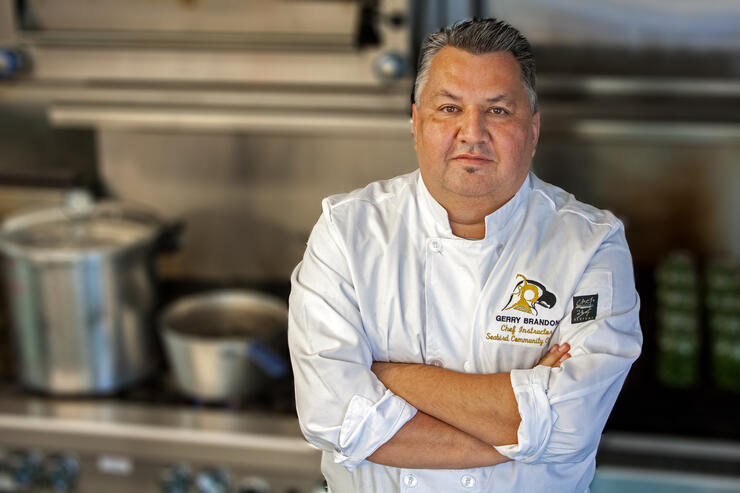
Brandon was raised in New Liskeard, one of the three towns that amalgamated to form Temiskaming Shores in 2004. A product of the Sixties Scoop—he’s Anishinaabe, and was adopted as a baby—Brandon made his career in urban restaurants across the country before coming home two years ago to settle down. It’s a retirement of sorts, if working 16 hour days can be considered retirement.
Brandon started off as a corporate planner with a business degree, and found himself travelling extensively with a food-loving boss in the ’80s.
“He would take me into these great restaurants, and I kind of got the bug for cooking,” recalls Brandon. “I decided I wanted to work with my hands and I wanted to cook.”
With no experience, he walked into the premier restaurant in London, Ontario at the time and offered to work for free until he knew enough to be worth paying. Within two years, he was the sous-chef.
Two years later, he graduated from the prestigious Stratford Chef School in 1991. Before long, Brandon was head-hunted out to Vancouver, where he met Nancy Cassidy, now his wife and business partner. Over time, Brandon found himself moving back to his business roots, and into consultancy work, helping restaurants build (or rebuild) and teaching culinary arts to Indigenous youth on reserves.
After years out west, though, Brandon found himself thinking about changing tack again.
“Vancouver was changing immensely, it was gentrifying and neighbourhoods were becoming too expensive,” explains Brandon. “We thought: If we were to sell up in Van and move, what would we like to do? What if we went back to the beginning? Then my brother said, ‘Well, why don't you come back, have a visit, and see what’s happening here?’ ”
That visit proved promising, and introduced Brandon to Foire Gourmande. The annual gourmet food festival in Ville-Marie—just a hop, skip, and a jump across the border from Temiskaming Shores in Quebec—amazed Brandon and Cassidy with its sheer size and variety of vendors.
“I went and saw thousands of people converging in this small Quebec town for gourmet foods and products, I was astounded!” he recalls. “I thought, let’s have a look and see what’s possible here.”
Using the math he’d perfected in his consulting, Brandon calculated that at just under 10,000, Temiskaming Shores might be too small, but if he included people from the surrounding areas, there was the capacity to support the “fast casual” style restaurant he had in mind.
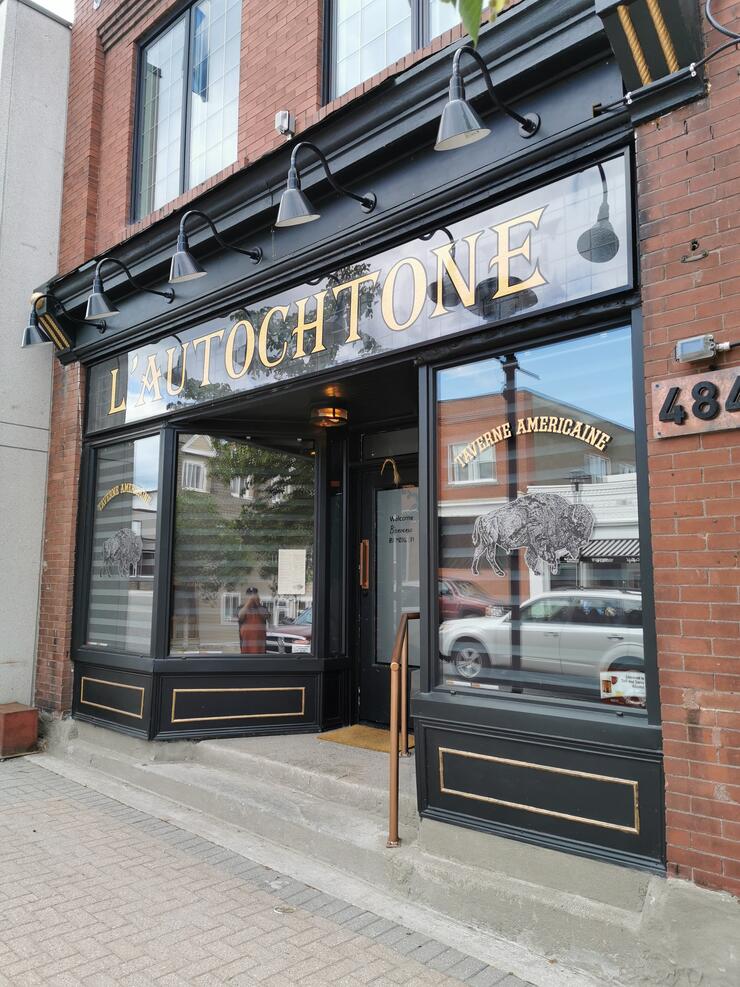
Shortly after, he and Cassidy bought a property sight unseen, and started building. Well, first they started gutting. They rebuilt it from the ground up: from a new foundation to the custom black-and-white tiled floor designed to look like it belonged in the historic building, and from the copper countertops to the bathroom ceilings done in wallpaper based on a 100-year-old Ojibwe beading pattern.
“We’ve built nine restaurants, and this is probably the smallest one and most expensive one I’ve ever built,” he laughs.
They officially opened their doors in April 2019, offering a small but carefully curated, and always changing, menu.
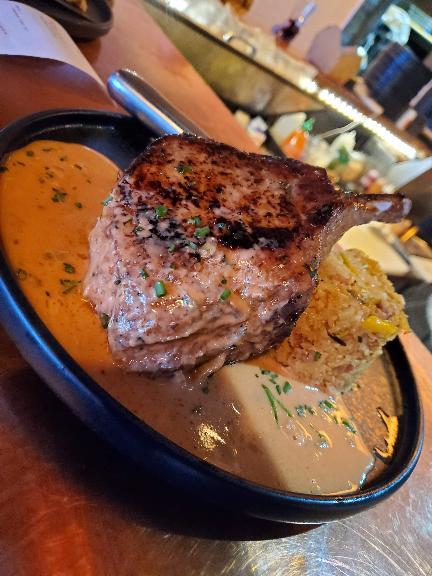
Brandon describes it as: “A combination of things we’ve done over the years, some of my greatest hits melded with things from my travels. I’ve travelled fairly extensively… I’m the guy standing in a lineup of 80 people waiting for tacos in Baja. I’m always looking at ingredients and processes that are Indigenous.”
Every dish reflects this Indigenous concept: There’s sage fry bread and duck poutine, “Wendigo” pickled deviled eggs and local cheese with preserves, wild rice risotto with local vegetables and braised meat.
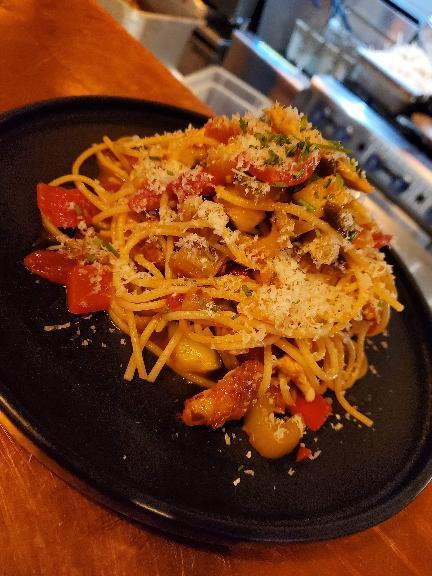
“The idea was that we would operate a restaurant and bar that’s obviously Indigenous, but show Indigenous culture as something that’s a living and breathing thing,” adds Brandon. “What we’re trying to do is pose a question: Can you build, or rebuild, a community around food?”
The way other businesses around them are thriving suggests a resounding “yes.” Brandon points to a core group of businesses and organizations leading that charge. In Haileybury alone there’s Whiskeyjack Beer Company, serving up craft beer across the street from L’Autochtone; Bridging the Gap Wellness Centre, a holistic community space for wellness; and Open Studio Libre, a free art space. You don’t have to go far to find Chat Noir Books in New Liskeard or Poor Boy Soles a little south in Cobalt (run by one of a handful of traditional cobblers left in Canada).
If all goes as planned, there may be another business opening in downtown Haileybury soon, too. Brandon and Cassidy are looking to open a grocery store in an old confectionary called Busters that ran from 1923 until 2014. They’d sell speciality products while also using the space to store some of the food they use at the restaurant.
Brandon says the store would allow them to have a “full-circle sustainability approach.”
Before that, though, their number-one priority is building a patio for the 2020 season, doubling their seating, and making sure visitors can take advantage of the beautiful summer weather.
For now, Brandon is enjoying bringing his signature product to his hometown, and being back home himself.
“As an Indigenous person, you feel this inherent draw to the land and the lakes and the trees and the forest, the rock… all that,” he says. “It feels like drawing a comfortable blanket over me. It’s just spectacular scenery here—living on a lake that’s practically 100 miles long is something many people dream of.”

Recommended Articles

Ontario Pow Wow Calendar: 2025 Edition
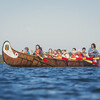
8 Indigenous Tourism Experiences To Book in 2025

Indigenous Restaurants in Ontario

8 Indigenous Experiences to Discover in North Bay
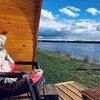
6 Indigenous-owned Accommodations in Ontario
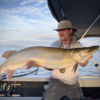
7 Indigenous-Owned Fishing Experiences in Ontario

Pow Wow Road Trip 2024
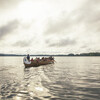
11 Indigenous-Owned Outdoor Adventure Companies in Ontario

13 Indigenous-Owned Businesses to Visit on National Indigenous People's Day—and Every Day

A Guide to Visiting the Kay-Nah-Chi-Wah-Nung Historical Centre
Indigenous Theatre on Manitoulin Island

